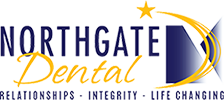Up to 30 percent of all U.S. adults suffer from sleep apnea, although most of them don’t realize it or have never been diagnosed with it. This disorder, which causes breathing to stop multiple times during sleep, can cause both physical symptoms and serious complications. Fortunately, oral appliances can help restore normal breathing.
If you think you have sleep apnea but don’t relish the idea of using a continuous positive airway pressure (CPAP) device, you should cultivate a basic understanding of how oral appliances can control the condition conveniently and quietly. Take a look at the following questions and answers about oral appliance therapy.
What Does Sleep Apnea Involve?
Sleep apnea involves interruptions to normal breathing during sleep. These interruptions may only last a second or two, but they can occur many times per night. This constant sleep disruption can cause daytime fatigue, dry mouth, and headaches. It also raises blood pressure and may increase your risk of heart attack and stroke.
Some people have central sleep apnea caused by a neurological abnormality. However, most individuals with sleep apnea have the obstructive variant. If you have obstructive sleep apnea, the tissues at the back of your airway tend to collapse inward, reducing or blocking the flow of oxygen when you inhale.
How Do Oral Appliances Prevent Sleep Apnea?
Oral appliances designed to fight sleep apnea look something like the customized night guards dentists prescribe for chronic tooth grinding. However, instead of a single custom-molded piece, these oral appliances include pieces for both the top and bottom rows of teeth. An adjustable coupler connects the two pieces.
When properly fitted and adjusted, the oral appliance holds your lower jaw slightly forward of its normal position during sleep. This position helps to keep the tissues toward the back of the throat taut instead of letting them collapse, thus keeping your airway open.
Why Might You Prefer Oral Appliances over a CPAP Machine?
CPAP therapy remains the most common means of coping with obstructive sleep apnea. Unfortunately, many people have trouble getting accustomed to the use of CPAP. The noisy mechanism can make sleep elusive and annoy sleep partners, in stark contrast to the silent convenience of an oral appliance.
Oral appliance therapy holds other advantages over CPAP therapy. You’ll find it easier to travel with a small oral appliance than to pack an elaborate machine. Additionally, oral appliances don’t require electricity or the use of an awkward face mask. You can even drink water freely through the appliance in the middle of the night.
What Should You Expect From Oral Appliance Therapy?
If a sleep center’s evaluation confirms that you have sleep apnea, you should schedule a dental exam to have your jaw and bite alignment inspected. Your dentist may discover your sleep apnea stems from a bite misalignment. If so, some corrective dentistry could resolve your issues permanently, with no need for an oral appliance.
If you can benefit from oral appliance therapy, your dentist will send impressions of your bite to a laboratory for the fabrication of your custom-fitted appliance. In a follow-up appointment, your dentist will make some final adjustments to ensure that the appliance holds your jaw in just the right position. The entire fitting process may take a few weeks.
Keep in mind that oral appliances can collect plaque and bacteria as readily as teeth and gums can. To prevent this accumulation from leading to tooth decay or gum disease, clean and dry your oral appliance before each use. Brush, floss, and apply a fluoride gel to your teeth before inserting the oral appliance.
The team at Northgate Dental can help you resolve your sleep apnea dilemma. We can fit you with ProSomnus Therapy which helps you get a restful night of sleep without noisy machines, masks, or hoses or make subtle but important changes to your bite alignment so you can breathe more normally at night and protect your overall health. Contact our Colorado Springs, CO, office to learn more and schedule an appointment.
